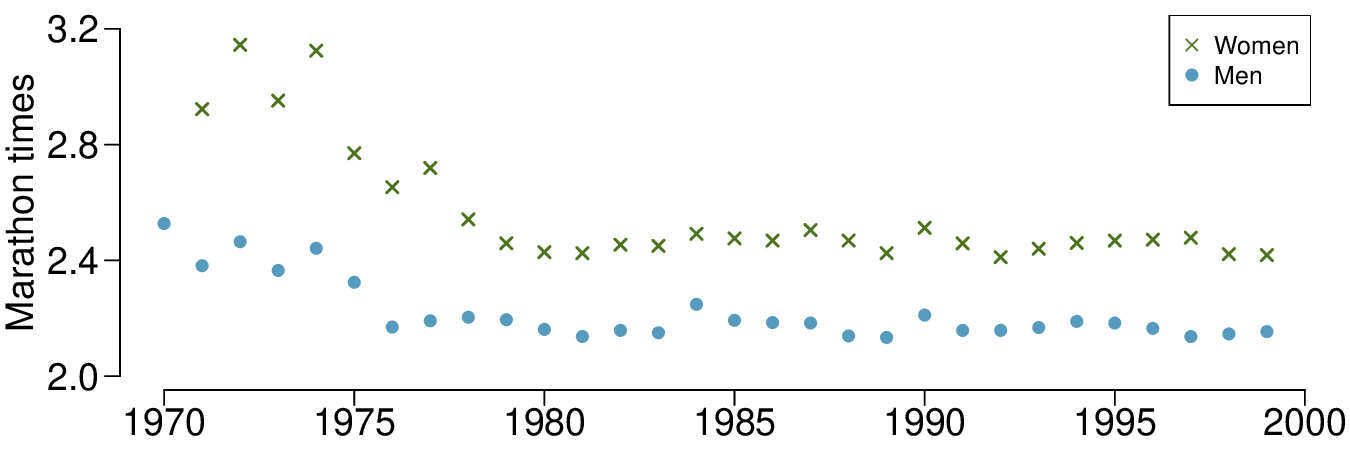1. Make-up exam.
In a class of 25 students, 24 of them took an exam in class and 1 student took a make-up exam the following day. The professor graded the first batch of 24 exams and found an average score of 74 points with a standard deviation of 8.9 points. The student who took the make-up the following day scored 64 points on the exam.
- Does the new student’s score increase or decrease the average score?
- What is the new average?
- Does the new student’s score increase or decrease the standard deviation of the scores?
Solution.
- Decrease: the new score is smaller than the mean of the 24 previous scores.
- Calculate a weighted mean. Use a weight of 24 for the old mean and 1 for the new mean: \((24\times 74 + 1\times64)/(24+1) = 73.6\text{.}\)
- The new score is more than 1 standard deviation away from the previous mean, so increase.






